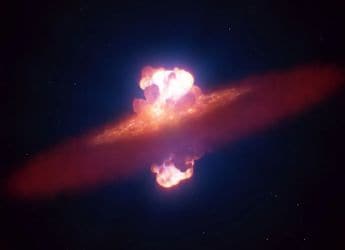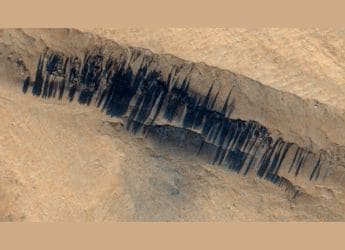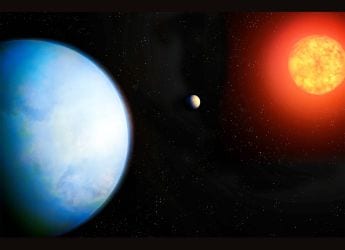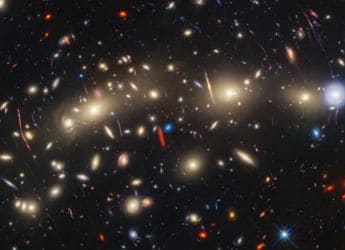Snapchat Claims 1 Billion Stories Are Viewed Each Day, Outpacing Snaps
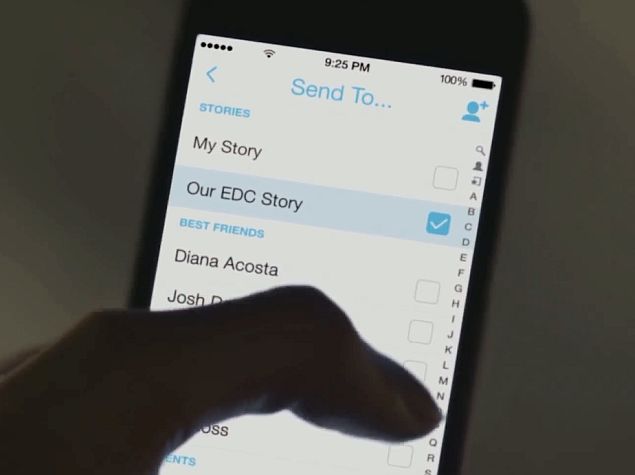
Snapchat has unveiled that its Stories feature is now the app's most popular feature, leaving behind the ephemeral Snaps feature that made the app famous.
Speaking to The Verge, Snapchat claimed that 1 billion Stories are now viewed each day, shooting up from 500 million just two months ago.
The Snapchat Stories feature was launched late last year, and lets users create a set of images that stays available to view for 24 hours before disappearing. These stories can be viewed by the user's friends, or by anyone, depending on the user's chosen settings.
Snapchat last week revealed its Our Story feature through which users who are at the same event location can contribute Snaps to the same Story. The disappearing image and text messaging service also announced that it is making the Our Story feature available for the first time with the Electric Daisy Carnival event, which happened from June 20 to June 22.
Last week Snapchat detailed the process, and said "If you're at Electric Daisy Carnival, simply add a Snap to 'Our EDC Story' that appears in your 'Send to...' page. You'll need to turn on location services to let Snapchat know that you're actually at the event. We don't store your location. If you can't make it to Electric Daisy Carnival, add EDCLive on Snapchat to check out the event - live - through a series of Snaps!"
Facebook recently rolled out its own ephemeral messaging app, Slingshot. Prior to this, in May, Snapchat added two new features: text chats (instant messaging) and video calls to its app.
Get your daily dose of tech news, reviews, and insights, in under 80 characters on Gadgets 360 Turbo. Connect with fellow tech lovers on our Forum. Follow us on X, Facebook, WhatsApp, Threads and Google News for instant updates. Catch all the action on our YouTube channel.
Related Stories
- Samsung Galaxy Unpacked 2025
- ChatGPT
- Redmi Note 14 Pro+
- iPhone 16
- Apple Vision Pro
- Oneplus 12
- OnePlus Nord CE 3 Lite 5G
- iPhone 13
- Xiaomi 14 Pro
- Oppo Find N3
- Tecno Spark Go (2023)
- Realme V30
- Best Phones Under 25000
- Samsung Galaxy S24 Series
- Cryptocurrency
- iQoo 12
- Samsung Galaxy S24 Ultra
- Giottus
- Samsung Galaxy Z Flip 5
- Apple 'Scary Fast'
- Housefull 5
- GoPro Hero 12 Black Review
- Invincible Season 2
- JioGlass
- HD Ready TV
- Laptop Under 50000
- Smartwatch Under 10000
- Latest Mobile Phones
- Compare Phones
- Vivo Y500 Pro
- Realme GT 8 Pro Aston Martin F1 Limited Edition
- Huawei Mate 70 Air
- Moto G57
- Moto G57 Power
- Motorola Edge 70
- Moto G Play (2026)
- Moto G (2026)
- MacBook Pro 14-inch (M5, 2025)
- Asus Vivobook S16 (S3607QA)
- iQOO Pad 5e
- OPPO Pad 5
- Noise Diva 2
- Noise Halo 2
- Acerpure Nitro Z Series 100-inch QLED TV
- Samsung 43 Inch LED Ultra HD (4K) Smart TV (UA43UE81AFULXL)
- Asus ROG Ally
- Nintendo Switch Lite
- Haier 1.6 Ton 5 Star Inverter Split AC (HSU19G-MZAID5BN-INV)
- Haier 1.6 Ton 5 Star Inverter Split AC (HSU19G-MZAIM5BN-INV)













